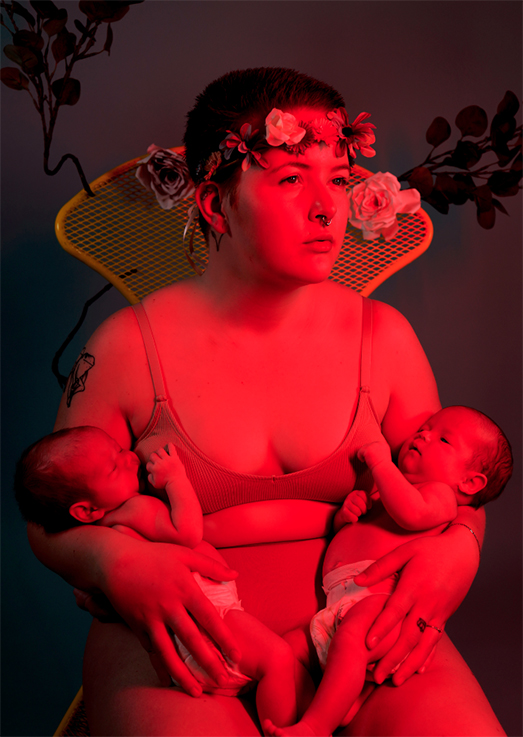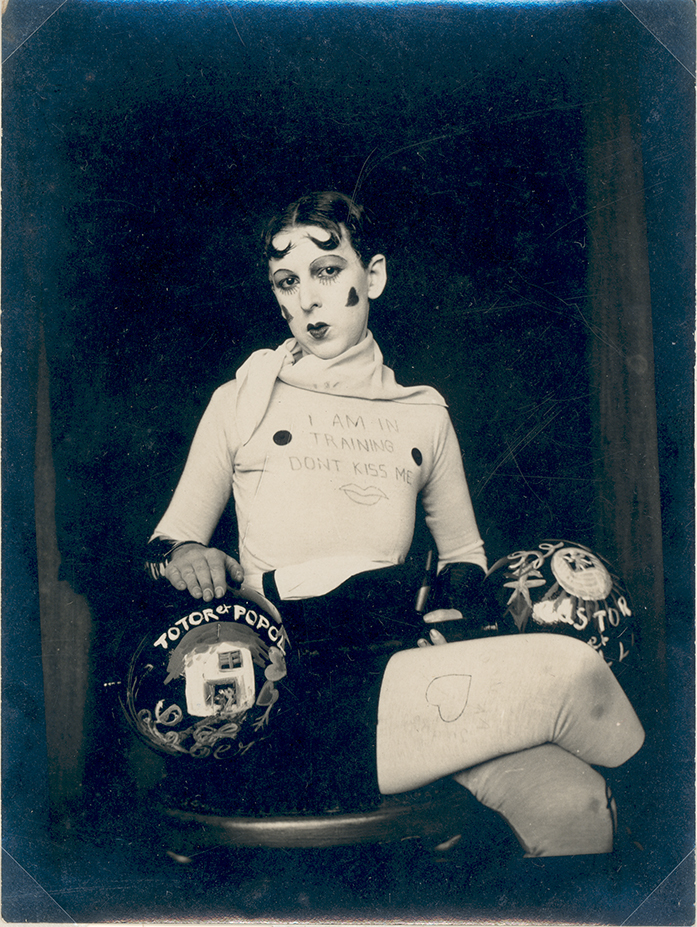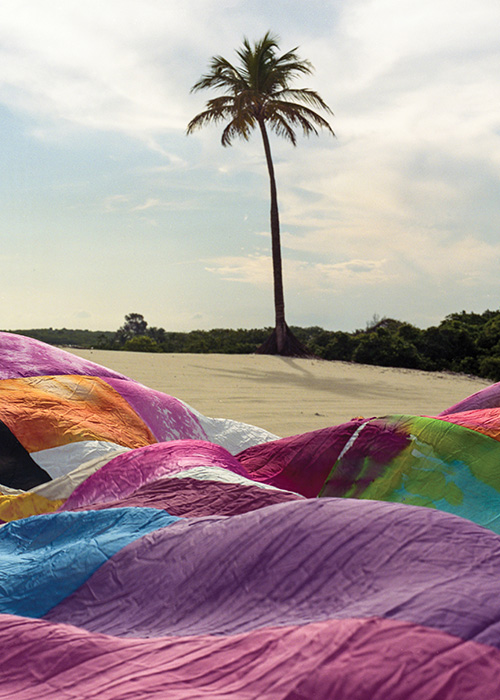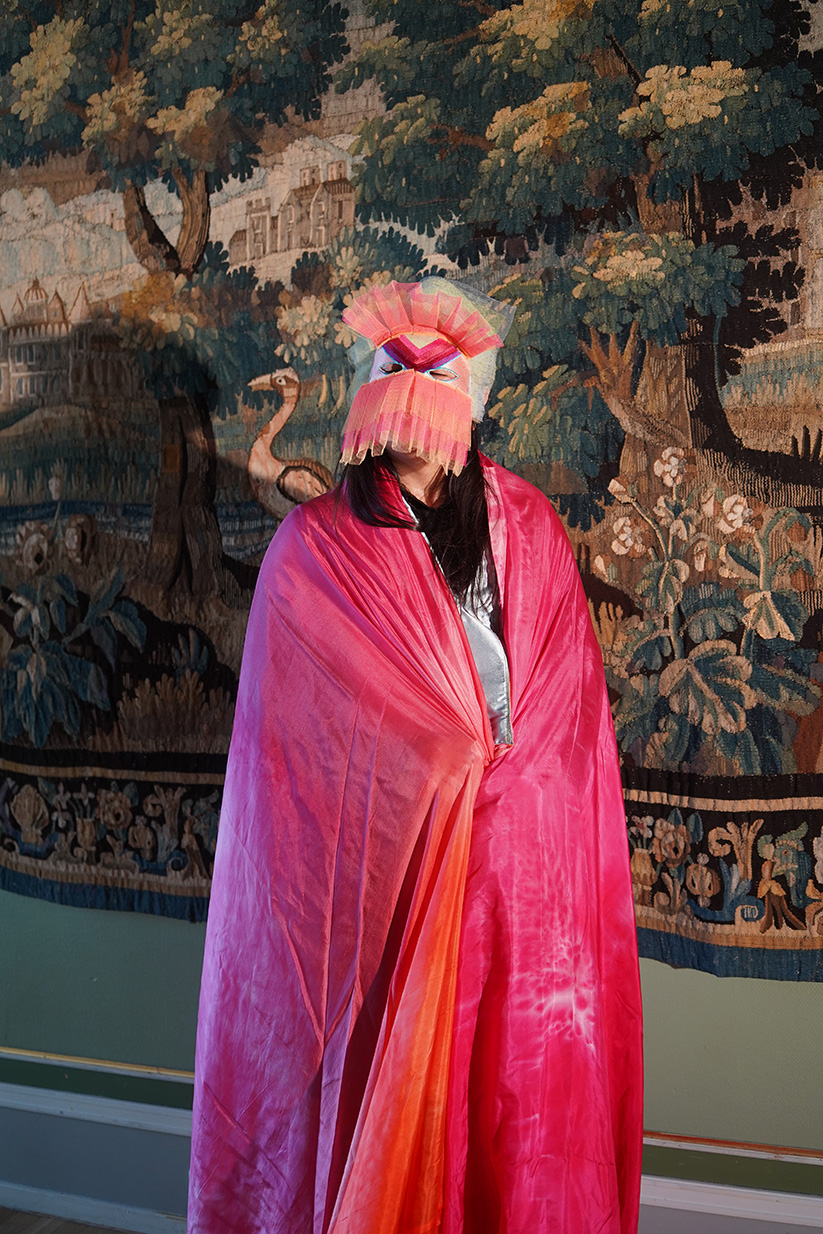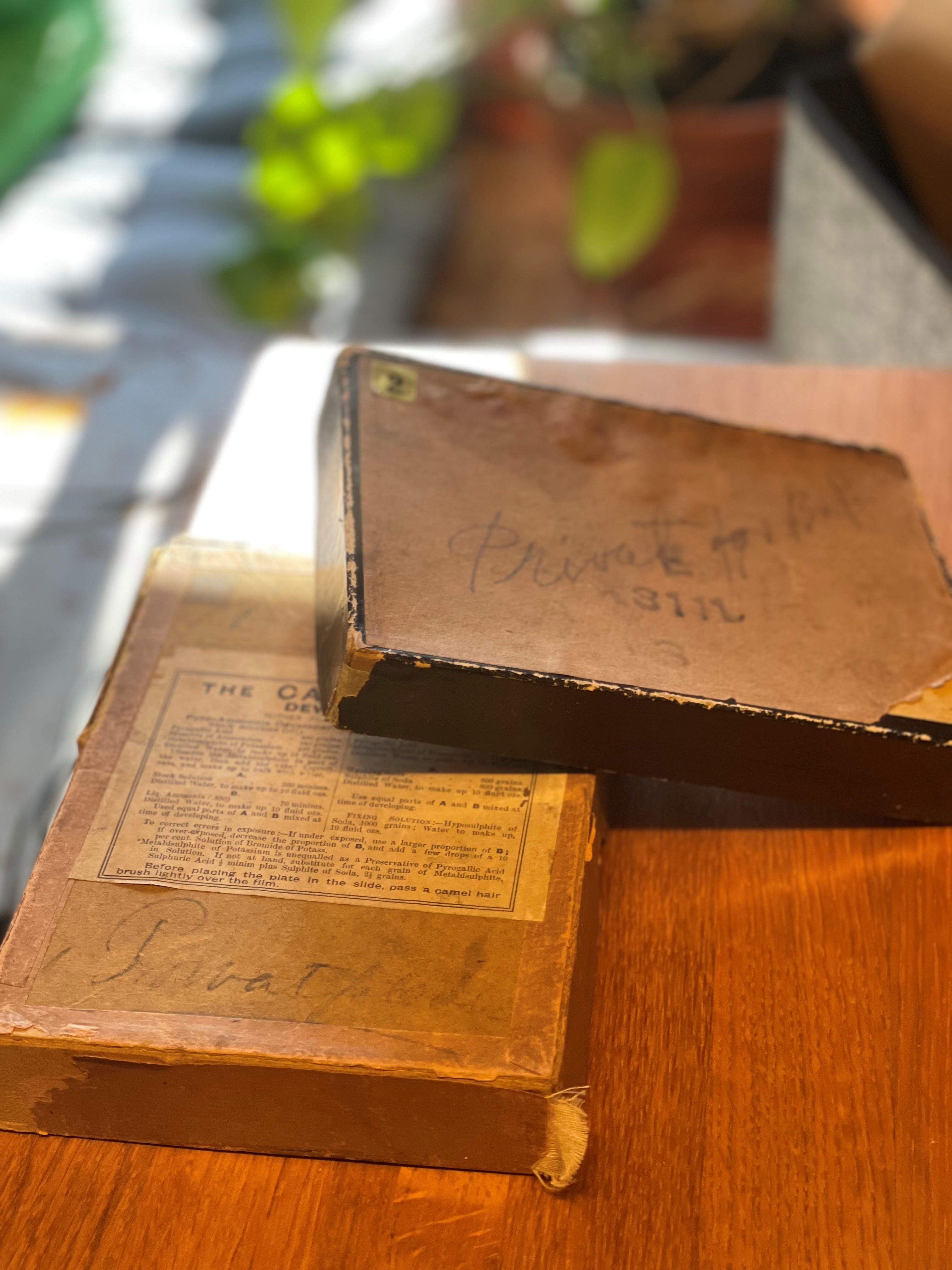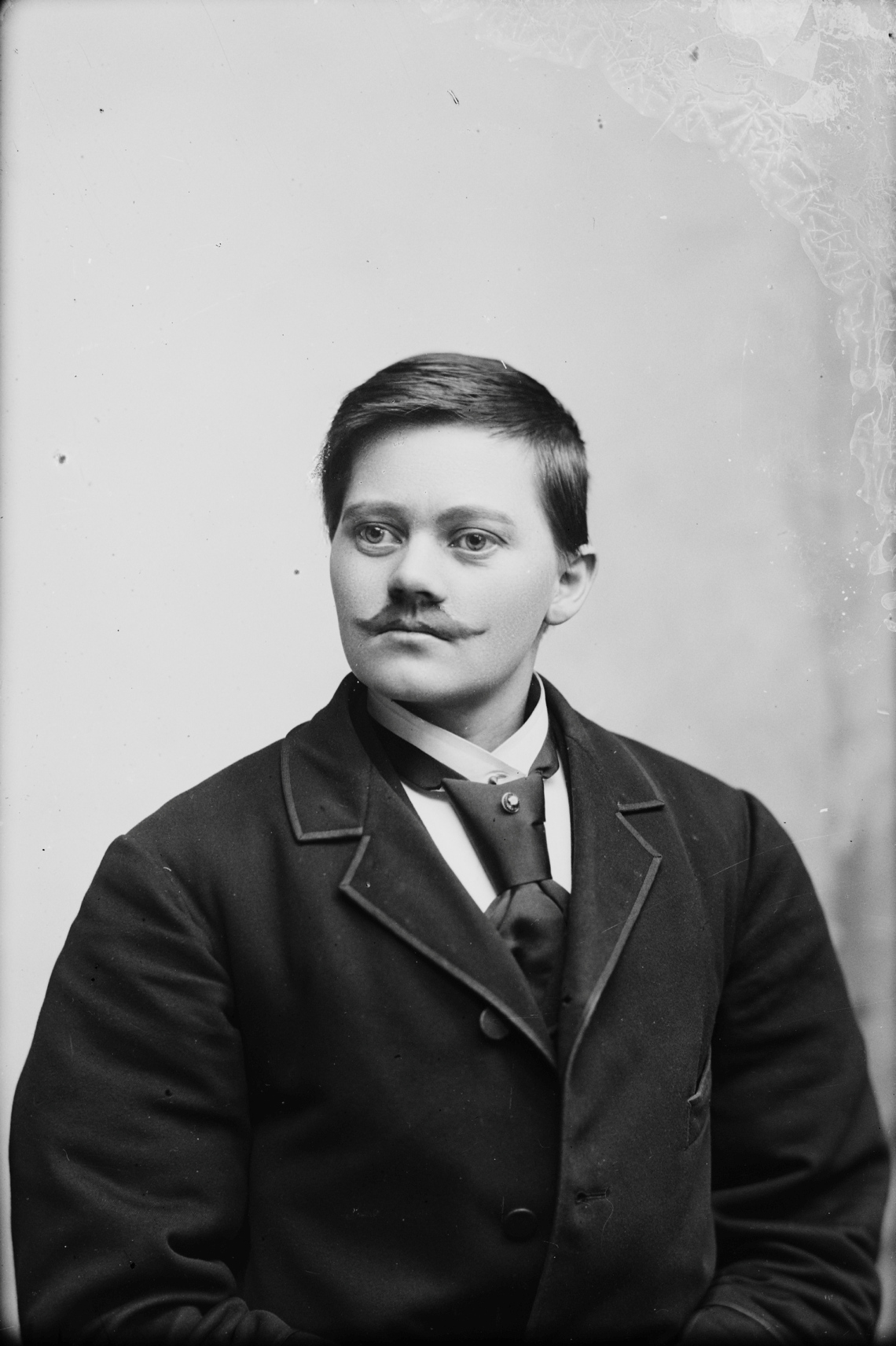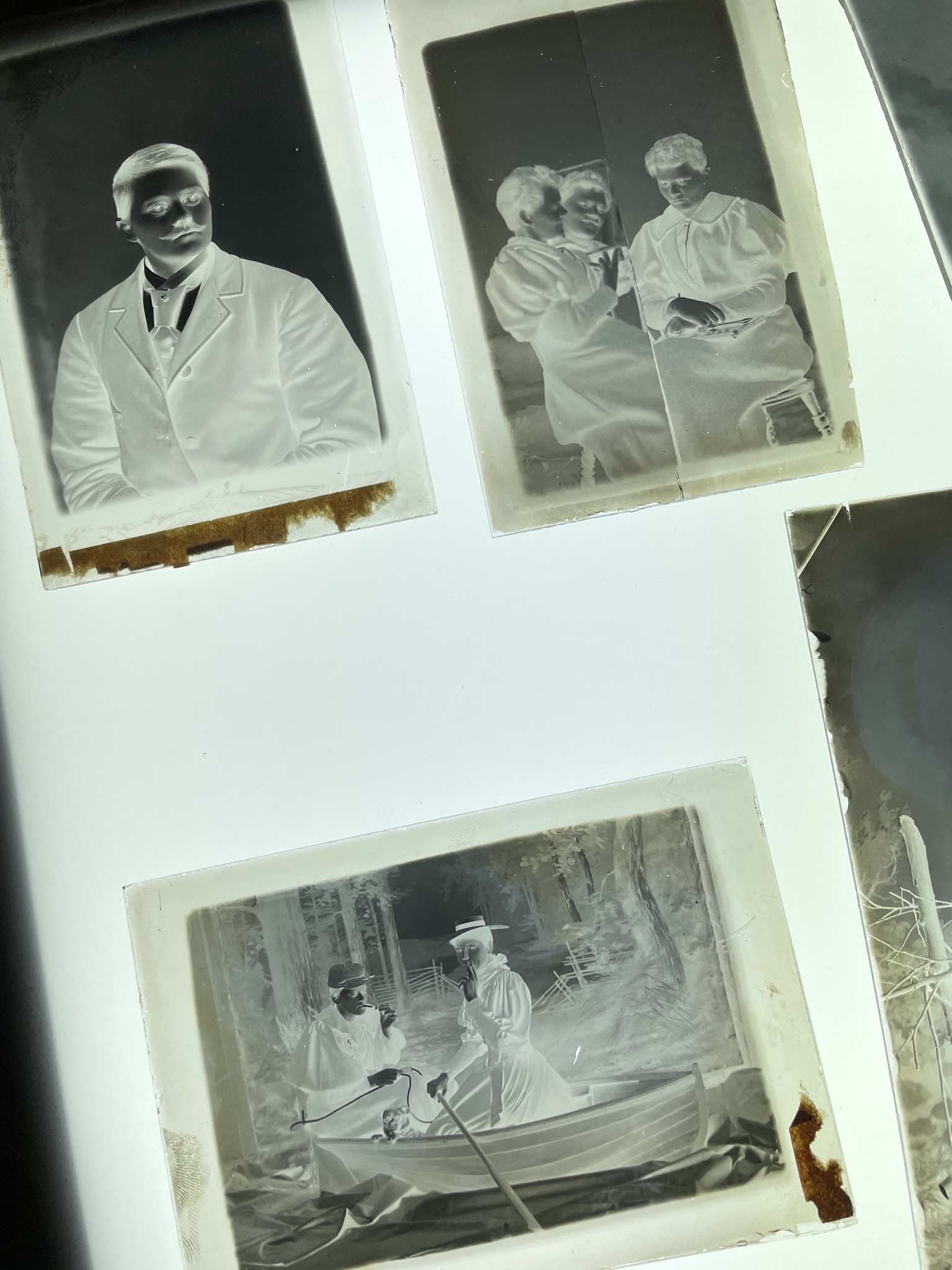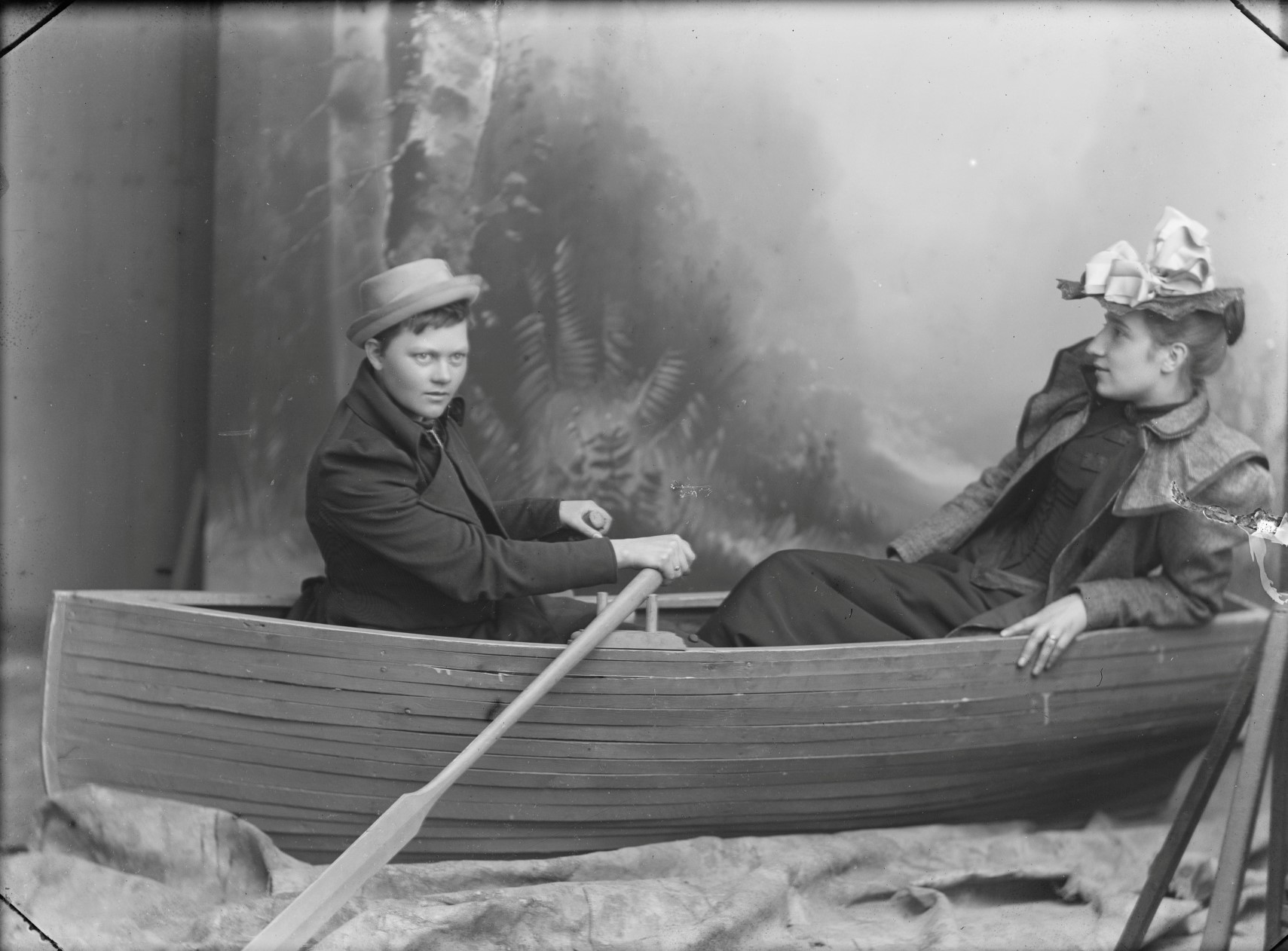Berg & Høeg, Marie Høeg and Bolette Berg in a boat in studio, 1895—1903. Preus Museum collection.
Over the Rainbow
Queer Culture Year at Preus Museum
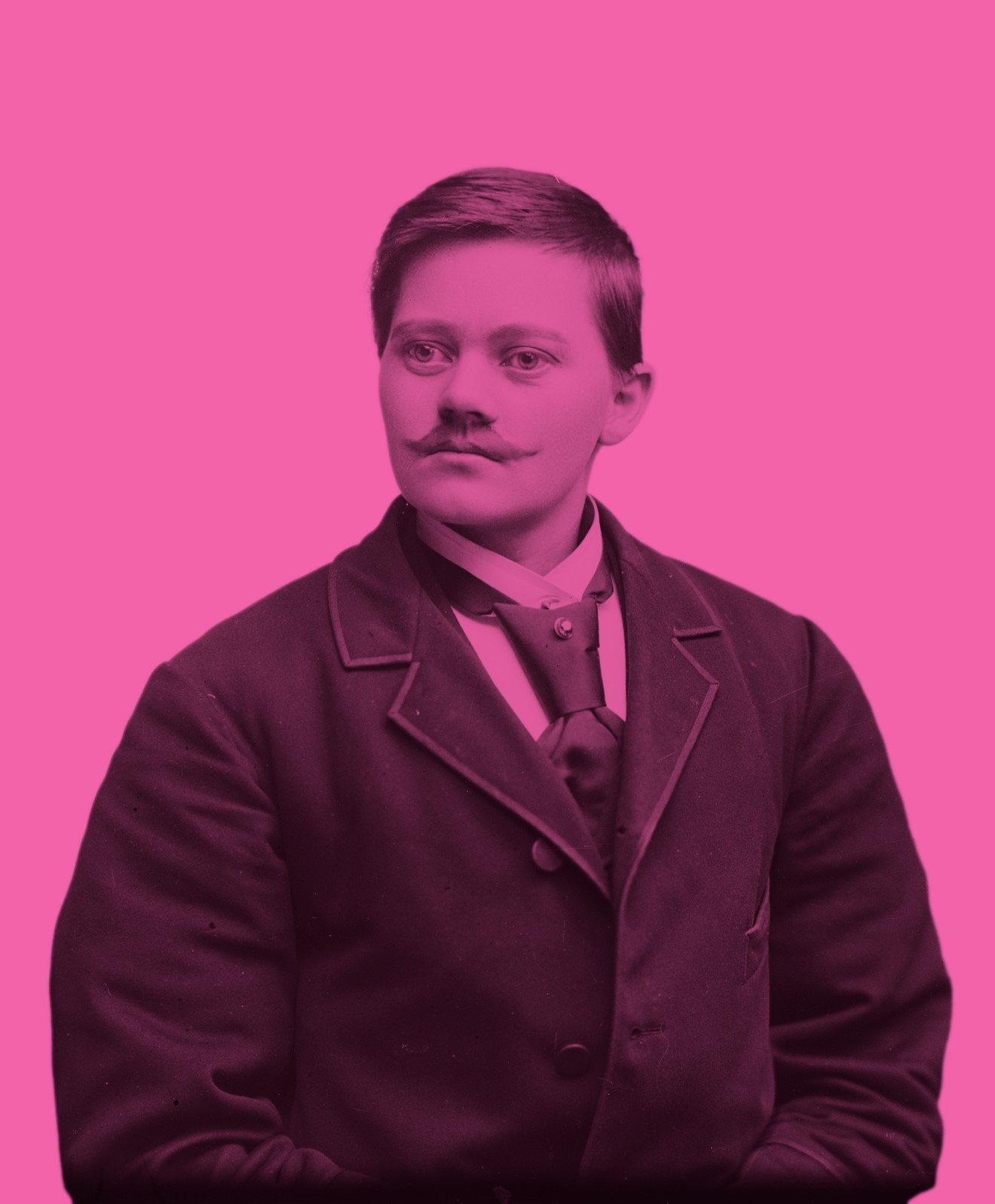
Berg & Høeg, Marie Høeg with a moustache, ca 1895—1903
Collection of Preus Museum
Queer Cultural Year 2022 at Preus Museum
A joyous celebration with serious undertones
Welcome Every Body to Over the Rainbow!
Curator: Hilde Herming
In 2022 it is fifty years since homosexuality was decriminalized in Norway, and Preus Museum is celebrating the Queer Cultural Year with the exhibition Over the Rainbow. The exhibition is based on private photographs in the museum’s collection originally belonging to the women’s rights activists and photographers Marie Høeg (1866—1949) and Bolette Berg (1872—1944). Preus Museum finds itself in a unique position because photography has had, and still has, an entirely central place in staging, documenting, and experimenting with the concept of identity. The exhibition will juxtapose historical and contemporary material across generations and show a range of genres from documentary photography to portraits and video works.
Marie Høeg and Bolette Berg – in brief
“She came in like a tornado and woke up sleepy Horten!” (said about Marie Høeg during her lifetime)
Marie Høeg and Bolette Berg were active as photographers in Horten from 1895 to 1903 and lived together their entire adult life. Photography was regarded as a respectable occupation for women, and upon completing their education in Finland they founded the photography studio Berg & Høeg. There, they took portraits of the citizens of Horten, in addition to landscape pictures and pictures of daily life in the city, which they then sold as postcards. Marie and Bolette were active in the struggle for equality and for the right of women to vote. Marie figured prominently both locally and nationally and founded Diskusjonsforeningen (“the Discussion Society”), where women met to engage in political debate. This had to be done in secret because politics at the time was the exclusive domain of men.

From the Salon in the exhibition Over the Rainbow (photo: Ingrid Aas/Preus Museum)
In the 1980s, two boxes labelled “private” were discovered out of the blue and donated to Leif Preus. The boxes turned out to contain glass negatives of Marie, Bolette, and their friends, where they stage themselves and challenge nineteenth-century ideals of womanhood and the stereotypical gender roles of the era. Their political activism for equality is also apparent in these photographs, whose imagery provides a stark and humorous contrast to their portraits of the middle-class citizens of Horten. And it is these private photographs that have subsequently been interpreted within a queer context.

One of the private glass negatives after Marie Høeg and Bolette Berg that were found in the 1980s. More can be seen in the exhibition (photo: Ingrid Aas / Preus museum)
What kind of exhibition can we imagine that Marie and Bolette themselves would have appreciated?
Given Marie’s commitment to women’s suffrage and equality, it is natural to believe that she and Bolette would have been enthusiastic about Kim Friele’s fight for queer rights, and that they would have been committed to human rights in general. Friele is regarded as one of the most important voices in the struggle to abolish the section in the Norwegian penal code that criminalized homosexuality.

© Mimsy Møller, Kim Friele and Wenche Lowzow entered a partnership 6 August 1993. Outside Oslo City Hall after the ceremony. Preus Museum Collection
The Equality and Anti-discrimination Act states that everyone should enjoy equal rights regardless of sexual orientation, gender identity, and gender expression. At the same time, research shows that although the attitudes of the Norwegian populace and the living conditions for queer people have both changed in a positive direction, a comprehensive engagement is still required in this field. Moreover, being queer is still a crime in many countries. The fight is not over. We honour those who came before us and continue the work that must be done so that everyone can love the person they want to.
As far as we know, Marie and Bolette left neither diaries, letters, nor other written materials about their private life. This allows for a wide range of interpretations, something that continues to inspire artists who explore gender identity in their practices. When we see these pictures of Marie and Bolette, you could almost believe they were taken recently and then treated to look old. Much of the appeal of the photographs lies precisely in their humour and playfulness, their opposition to bourgeois conventionality, Marie’s short hair and the cigarette in her mouth, the saucy gaze that looks you right in the eyes. Bolette was likely more of an introvert, but was probably the one who most often was behind the camera. A new discovery of glass negatives left by Berg and Høeg that was donated to the collection in 2022 means that we now have more photographs by Bolette, which gives her a greater place in the history of Norwegian photography.

– Everyone has three lives: a public life, a private life and a secret life. (Gabriel García Marquez)
This description of how most of us divide our lives into different spheres alludes to ideas of how we must, can, or should behave in various types of spaces and to what possibilities and restrictions these spaces may have. A central concept within queer theory is performativity, that is the notion that gender is socially constructed, something we do, and not something we are. The way we move, talk, or dress is usually in line with heteronormative expectations about “femininity” and “masculinity” and becomes a way to uphold heterosexuality and the two-gender model as something natural and taken for granted.
The private photographs of Marie, Bolette, and their friends were not meant for public viewing at the time and seem more playful than controversial to audiences of today. This says a good deal about how the boundaries of what is regarded as acceptable or conventional change according to the place, time, and space.

Lill-Ann Chepstow-Lusty with her alter ego Log Lady Lusty in the exhibition Over the Rainbow (photo: Ingrid Aas/Preus Museum)
Welcome Every Body!
The exhibition examines such topics as how photography is used to explore gender identity, stereotypes, and the body as subject and object. It raises questions such as: Who is (the implicit) viewer? What role does the relationship between the photographer and the depicted people play? To what extent does the context of the presentation influence how those being depicted stage themselves?
The exhibition is loosely structured as sections with various titles that link the various works to one another in a non-chronological form of presentation. It has many layers and seems like a mini-universe of facts and fiction, narrative and interpretation.

Kiyoshi Yamamoto's silk coats are generously made available to the public in the exhibition (photo: Ingrid Aas/Preus Museum)
Queering Preus Museum (all over the place and space)
Preus Museum is Norway’s national museum of photography. The building was constructed around 1860 to serve as a navy storehouse. It has been listed as a cultural heritage building, meaning that physical changes to the building must meet strict requirements. As a museum, certain requirements must also be met in regard to safety, the indoor climate, and lighting in order to protect the photographs’ durability. Sverre Fehn’s exhibition architecture comes with its own possibilities and restrictions. The exhibition galleries are on the third floor, where you can learn about the history of photography and visit our temporary exhibitions. Preus Museum is a public space that should be accessible to everyone. The only private rooms, which are also publicly available, are the lavatories. The lavatories are the most obvious rooms in the building that refer to the two-gender model in practice.

Marie and Bolette's photos are hidden all over the museum (photo: Ingrid Aas/Preus Museum)
What is a queer exhibition?
What is queer photography?
What is it that makes a museum queer?
We have collaborated with Karmaklubb* to provide you with a somewhat different experience than what you usually encounter at the museum. Karmaklubb* has an ongoing series called Queering the Museum Investigations, which examines museological practices from queer perspectives. The collaboration has consisted of workshops with subsequent discussions and concrete projects that are presented at the exhibition and that will continue throughout 2022. Karmaklubb* is run by its founder Tine Semb.
You will be remembered!
♥
Hilde Herming, curator.

You will be remembered (photo: Ingrid Aas/Preus Museum)
Participants:
- Bolette Berg & Marie Høeg (NO)
- Gladys Bentley (US)
- Claude Cahun (FR)
- Imogen Cunningham (US)
- Loïe Fuller (US)
- Rocky Twins (NO)
- Linda Bournarne Engelberth (NO/DZ)
- Cassie Brødskive (Jens Martin Hartvedt Arvesen) (NO)
- Frida Marida (Hani Assaf) (LB)
- Danja Burchard (DE)
- Tonje Bøe Birkeland (NO)
- GUTTA (Lærke Grøntved (DK), Ann-Christin Kongsness (NO), Desiree Vaksdal (NO) and Josephine Collins (SE)
- Ihne Pedersen (NO)
- Karmaklubb* (Tine Semb) (NO)
- Anna Penkova (NO)
- Jan Khür (CZE)
- Julie Hrnčířová (CZE)
- Alex Benjamin (LB)
- Nayara Leite (BR)
- Lill-Ann Chepstow-Lusty (UK/NO)
- Mimsy Møller (NO)
- Skeiv Kopp (Pia Eikaas and Jo Ravn Abusland) (NO) in collaboration with Kristine Wessel, Mesén
- Maike Statz (AT)
- Paulina Stroynowska (PL)
- Line Ørnes Søndergaard (NO)
- Paulina Tamara (NO/CL)
- Henriette Berg-Thomassen (NO)
- Kiyoshi Yamamoto (BR/JP/NO)
- Ragnhild Aamås (NO)
- Students at Horten vgs: Maria Røset Bakkene, Laurence Breian Langø, Kamilla Espeseth, Kasper Stormorken, Fredrik Grimm Roberg, Worawut Meewicha, Ida Marie B. Pedersen, Andreas Nordeng, Frida Tangen, Celine Pletten Conway, Håvard Hindhamar Wean and Nora Lunne.
A big thanks to Morten Steen Kaels for models of the galleries, Finn Schjøll for flowers to Kim Friele on the opening night, Olea Julsrud Steinkjær for help with texts, The Naval Museum for good neighborliness, loan of furnitures and cooperation on pride flags on the submarine, and Gallery F-15 for lending us technical equipment.
Welcome to the queer photo museum!

From the Salon (photo: Ingrid Aas/Preus Museum)
-------------------------------------------------------------------------
About the collaboration with Karmaklubb*
Karmaklubb* has for several years worked on a series of museal experiments and encounters, ‘Queering the Museum’, where the aim is to challengee — with a queer approach — the various hierarchies and authorities such institutions inhabits. Queering Preus Museum The work to queer the Preus Museum is in process and will appear in a variety og projects and contexts several projects and other contexts during 2022 and beyond.
Karmaklubb* is a nomadic queer club concept and conversational platform, hosting club evenings and nights, curatorial work, screenings, artist talks, panels, concerts, performances of various sorts, the art of drag, wine tastings, and sometimes food. Karmaklubb* is also an international research hub and a publishing house, the IGWTLI publishing. Karmaklubb* is a celebration of good things and is initiated by and run by Tine Semb.
-------------------------------------------------------------------------
Curator Queer Cultural Year 2022/Over the Rainbow: Hilde Herming
Exhibition team: Pål Henrik Ekern (project leader and producer), Ingri Østerholt (head communication and education), Maria Røset Bakkene, (assistant) Andreas Kaardahl (museum technician)
Consultant and expert on Berg&Høeg: Hanne Holm-Johnsen

